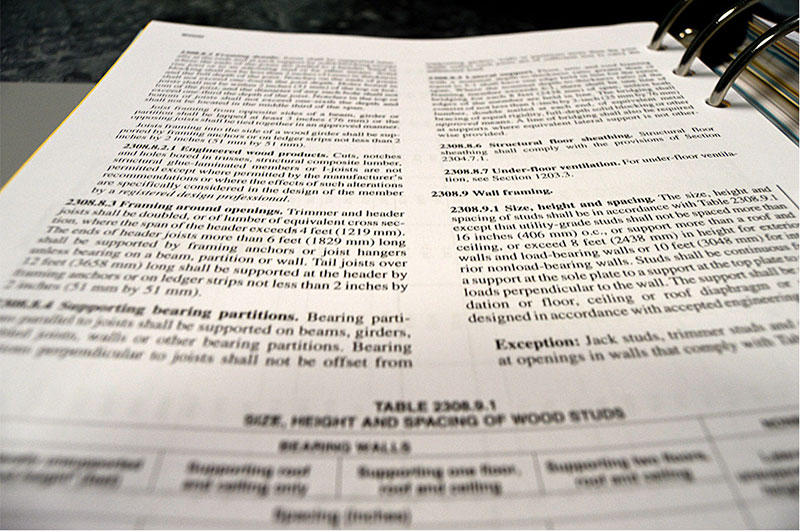
Illinois elevator rules can be confusing.
If you want to read the full details you can find them here. However, below we have compiled summaries of the rules most applicable to your elevator.
If you are still confused or would like additional help sorting through the rules, feel free to contact us at any time and we’ll help you ensure your elevator gets or remains compliant.
Initial Registration
According to Illinois elevator rules, if it moves people or freight, you must register it. Exceptions are home elevators and conveyances used in industrial or maintenance settings to move materials. Details here. To register:
→ Fill out this form and send it to the state.
→ Pay the $30 fee when you get an invoice.
→ Attach the metal tag the state sends you to the controller in the machine room.
→ Have your conveyance inspected.
→ Fill out this application for Certificate of Operation and send it to the state with a copy of the Inspection Report. If you are a building used for religious worship, you have only 1 elevator/lift in the building, and it only goes 2 levels, then use this form.
→ Pay the $100 initial fee when you get an invoice.
→ Frame and display the Certificate of Operation in the elevator cab.
Temporary Maintenance Authorization
If your elevator or lift has never been registered, again according to Illinois elevator rules, we are not allowed to repair or inspect it. Fortunately the state will grant you a 30-day maintenance authorization that will allow us to work on it as long as you get the inspection within 30 days. To do this:
→ Fill out this online form. Leave “mechanic information” blank. Under “need for request” choose “other” and type “have applied for permanent registration.”
→ The state will respond within 24 hours and email you a temporary maintenance authorization form. Post that in the machine room.
→ Make sure you’ve sent in your Registration of Conveyance Form (see link above). Leave section 6 blank if you haven’t yet had your first inspection.
→ Call us, and we’ll perform any repairs that are needed and schedule the inspection.
Annual Inspections
Every year, you must have a third-party inspector inspect your elevator. If you are a building used for religious worship, you have only 1 elevator/lift in the building, and it only goes 2 levels, then you only need an inspection every three years.
The State Fire Marshall isn’t staffed to perform all the needed inspections; hence they’re done by third parties. Here is a list of Illinois-licensed inspection companies. To renew your registration:
→ Call an inspector from the above list and schedule an inspection. (If you’re our customer, we’ll schedule it for you.) In most cases, they need an Elevator Mechanic to help them run a safety tests that are part of the inspection.
→ If the inspector notes any violations, correct them within 30 days.
→ Send the inspector’s report to the state with the form for annual, or this form for triennial. Pay the $75 invoice when they send it, and they’ll send you a Certificate of Operation that makes you legal for another year.
→ Frame and display the Certificate of Operation in the elevator cab.
→ Lather, rinse, and repeat annually (or triennially if you’re a 2-story church with a single elevator)
Code Upgrades
As the elevator code is updated every few years, older elevators are typically grandfathered in…for a time. Illinois is requiring that all conveyances meet the following requirements by January 1, 2015:
→ Restricted opening of hoistway and car doors on passenger elevators (required by January 1, 2014)
→ Car illumination (battery-powered emergency light)
→ Emergency operation and signaling devices (alarm button and phone or intercom in car)
→ Phase reversal and failure protection (applies to AC motors on door operators, pump motors on hydraulic elevators, and motors on traction elevators)
→ Reopening device for power operated doors or gates (bump pad or infrared door detectors that reopen the door if the entrance is obstructed)
→ Pit stop switch (switch in the pit that the Elevator Mechanic can flip/push/pull to disable movement of the car while he’s in the pit)
→ Pit ladder (permanent ladder along the side of the hoistway to make it easy for the Elevator Mechanic to get in and out of the pit)
Jacks
If you have an in-ground jack that was installed prior to 1972, it likely has a single-bottom cylinder. When these eventually rust out, the hydraulic fluid leaks into the earth…not so good for the environment. Illinois requires that they be replaced with double-bottom cylinders when they fail. There is no fixed deadline. As a countermeasure until failure, you can install plunger grippers or another safety device that will minimize the leakage in the case of failure. Or you can be proactive and schedule a time for replacement that will minimize the disruption of operating without an elevator for a while.
